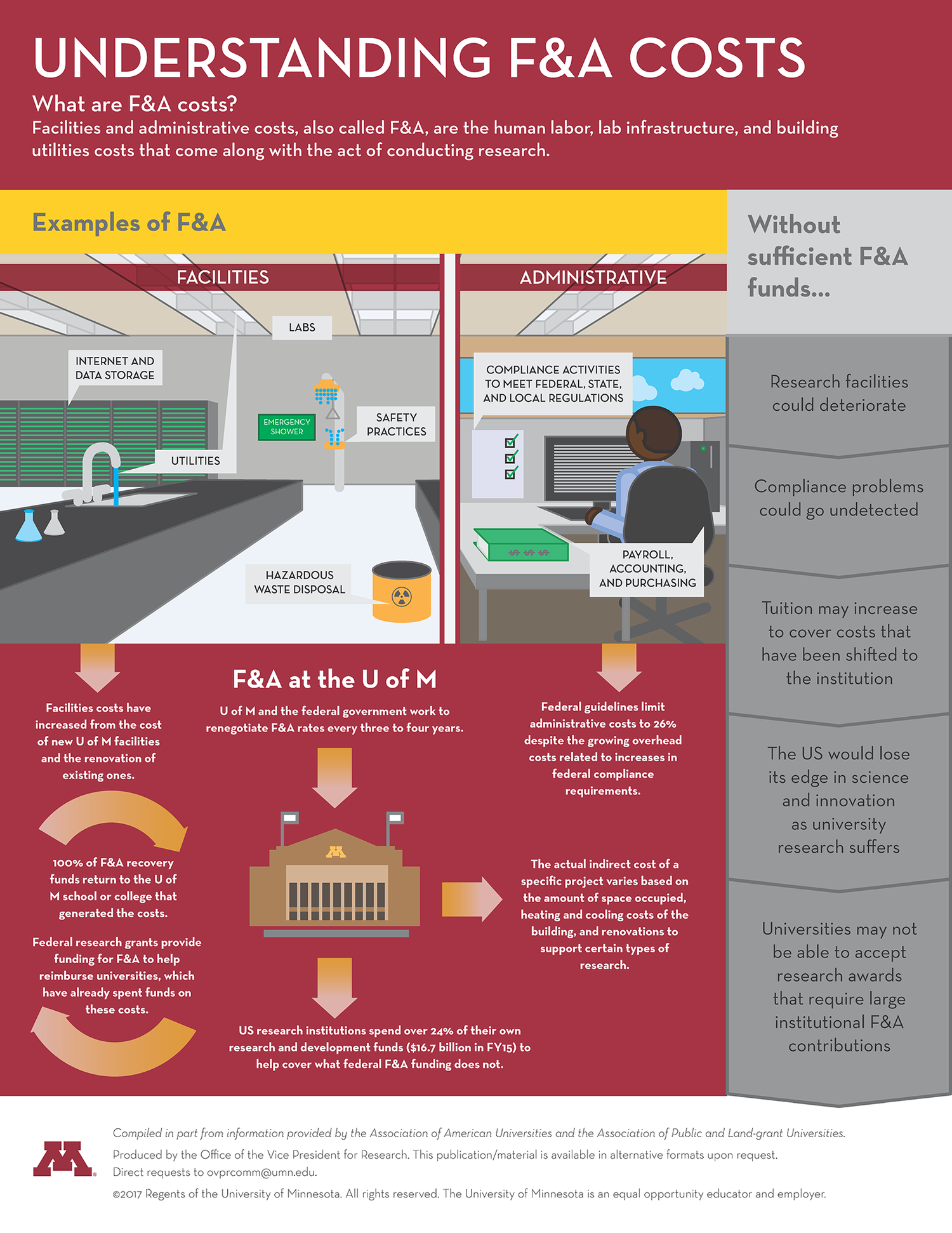
Indirect research costs do more than keep the lights on in labs. These necessary parts of federally funded research projects help maintain high-tech equipment, provide data storage, support administrative staff, and even cover the disposal of hazardous waste.
As noted in a New York Times article, US Secretary of Health and Human Services Tom Price recently called into question the value of funding indirect costs on grants awarded by the National Institutes of Health, the world’s largest public funder of biomedical research. Price said paring back such funding could bring significant financial savings to the federal government next year.
Federal grants’ support of indirect research costs, often called “F&A” (facilities and administrative), plays an important role in helping universities recover a portion of the administrative and infrastructure expenses that come along with research across all academic fields. F&A helps make research spaces safe, keeps lab equipment running properly, and ensures projects comply with laws and regulations.
Pamela Webb, associate vice president for research at the University of Minnesota, said cutting back F&A funding could significantly impair the U of M’s ability to advance knowledge and develop innovations.
“As a land-grant university, we have an obligation to foster discoveries that benefit the health, environment and quality of life of people in our state, across the nation and throughout the world,” Webb said. “Our researchers have the knowledge and drive to make that happen. We must ensure they have the physical and human infrastructure to conduct research properly and efficiently. ”
The U pays the costs for these F&A-based services leading up to and during research projects, and then receives a reimbursement from the federal funding agency that awarded the grant.
But the rates, which the U of M negotiates with the federal government every four years, don’t cover all of the University’s actual indirect research expenses. The federal government has capped support for the administrative portion of the costs at 26 percent since 1991, even though dramatically increased federal regulations and reporting obligations since that time have required more extensive compliance activities. Meanwhile, facilities costs at the U have grown with acquisition of the highly specialized technology necessary for today’s research, construction of new buildings, and the renovation of older ones.
Already, the U must use its own institutional funds to make F&A ends meet. And the U isn’t alone—research universities across the country are in a similar situation, with 83 percent of colleges and universities incurring administrative costs in excess of the 26 percent cap. According to federal data, institutions contribute more than 24 percent of the cost of doing research, with a total of $6.1 billion covering unreimbursed expenses and cost-shared F&A.
With F&A support already coming up short, major cuts to F&A funding in federal grants would threaten advances in knowledge and innovation at the U of M and many other public research universities. Without F&A funding, these universities might be forced to refuse a research award—even a large and prestigious one—if the F&A funds that came along with it were lower than the U could afford. Researchers in the middle of a project might experience deteriorating labs that become increasingly expensive to maintain. Administrators, on the other hand, would strain under diminishing resources to ensure the safe and ethical conduct of research.
David Hagen, director of the U’s Office of Cost Analysis, said weakening universities’ research enterprises could hinder the US’s competitive edge in science and innovation.
“We hope policymakers will understand the devastating nationwide impact that could result from reducing F&A funding,” Hagen said. “These expenses are a real and necessary aspect of the research process. The less federal support we have, the more our researchers, along with their colleges and departments, will find themselves hitting barriers.”
